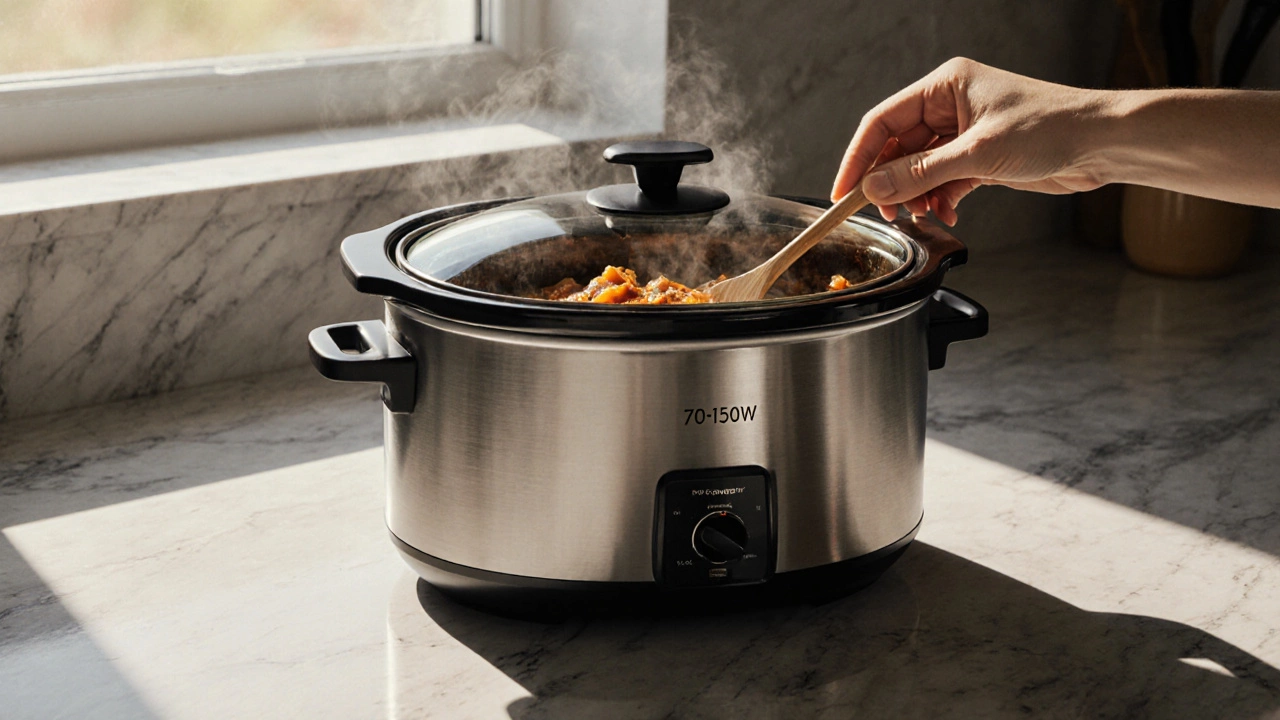Wattage: The Power Behind Your Kitchen Gear
When talking about Wattage, the measure of electrical power a device uses, expressed in watts. Also known as Power Rating, wattage tells you how much energy an appliance pulls from the outlet when it runs. Understanding this number helps you pick tools that heat fast, stay safe, and don’t blow your electric bill.
Another key player is Power Consumption, the total amount of energy an appliance uses over time. While wattage shows the instant draw, power consumption adds up across minutes or hours. If you compare a 1500‑watt microwave to a 800‑watt model, the higher‑watt unit will generally heat food quicker, but it may also use more electricity per session. That’s why savvy cooks watch both numbers to balance speed and cost.
Why Wattage Matters in the Kitchen
The third entity that ties directly to wattage is Kitchen Appliances, tools like ovens, blenders, toasters, and cooktops that convert electrical energy into heat or motion. Each appliance is designed for a specific wattage range. Plugging a 2000‑watt blender into a circuit meant for 500‑watt devices can trip breakers, while using a low‑watt toaster for thick artisan bread might leave it under‑done. Matching the appliance’s wattage to your home’s electrical capacity ensures reliable performance and safety.
Finally, Energy Efficiency, how well an appliance turns electrical power into useful cooking work influences the wattage you really need. An energy‑efficient oven may reach the same temperature with fewer watts than an older model, saving money and reducing heat in the kitchen. Look for ENERGY STAR labels or efficiency ratings to gauge how much wattage is truly required for the task.
Putting these pieces together creates a clear picture: Wattage defines the instantaneous power draw, power consumption measures the total energy used, kitchen appliances are the vehicles that apply that power, and energy efficiency determines how much of that power translates into cooking results. When you know the wattage of a new blender, you can estimate its power consumption during a smoothie run, check if your countertop circuit can handle it, and decide if its efficiency rating justifies the purchase.
For home cooks, this knowledge changes how you plan meals. Want a rapid boil for pasta? A 2000‑watt electric kettle will hit boiling point in minutes, while a 900‑watt model may linger. Baking a pizza? An oven that delivers 3500 watts of heating power will preheat faster and maintain a steadier temperature, leading to a crisp crust. By matching the wattage to the cooking method, you avoid over‑cooking or under‑cooking food.
Professionals benefit, too. A high‑wattage searing station can create the Maillard reaction instantly, giving steak that perfect crust without over‑cooking the interior. In a busy café, knowing the wattage of each espresso machine helps allocate circuits and prevents overloads during rush hour. Even small tools like hand mixers gain from the right wattage—too low and they stall on thick dough; too high and they over‑heat, shortening lifespan.
Safety can’t be ignored. Appliances that exceed the recommended wattage for a given outlet can cause overheating, tripped breakers, or even fires. Always check the label, ensure your home wiring matches the load, and consider using dedicated circuits for high‑wattage devices like deep fryers or commercial‑grade ovens. When in doubt, consult an electrician to verify that your kitchen’s wiring can support your gear.
In short, wattage isn’t just a number on a tag; it’s the bridge between electrical supply and culinary outcome. By understanding how wattage connects to power consumption, kitchen appliances, and energy efficiency, you gain control over cooking speed, cost, and safety. Below you’ll find a hand‑picked selection of articles that dive deeper into these topics, from choosing the right blender wattage to maximizing the efficiency of your oven. Explore the posts to sharpen your power‑aware cooking skills and keep your kitchen humming at the perfect level.

Do slow cookers use a lot of electricity? - Energy facts and cost guide
Find out how much electricity a slow cooker uses, compare its cost to other appliances, and learn tips to save energy while cooking.
More Detail